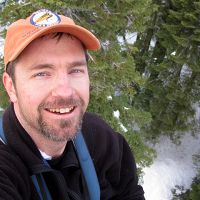Malazian et al., 2012
Soil moisture dynamics in deep Southern Sierra Nevada Soils
Malazian, A.I., Hartsough, P.C., and Hopmans, J.W. (2012)
Fall meeting, American Geophysical Union, December 2012. Abstract H11B-1176.
-
Sierra, GRAD STUDENT
-
Sierra, INVESTIGATOR
-
Sierra, COLLABORATOR
Abstract
As part of the Southern Sierra Critical Zone Observatory, the soil surrounding a white fir tree has been instrumented with volumetric water content (VWC), temperature, and soil matric potential sensors. The VWC (5-TM (Decagon Devices, Inc.) and neutron probe) and temperature (5-TM) associated with the deep vadose zone monitoring are being measured by 5-TM sensors. The soil matric potential is measured using tensiometers and MPS-1 sensors (Decagon Devices, Inc.). This instrumentation has been installed at depths of 150, 200, and 250 cm, so as to quantify subsurface soil moisture dynamics. The soil is quite sandy to varying depths after which a saprolyte layer exists moving into a more coarse textured subsurface. As snowmelt and rainfall infiltrate the soil at the surface it wets the soil profile to field capacity with the excess water replenishing deep water resources. The deep water resources are utilized as the shallower subsurface moisture is depleted leading to a more negative soil matric suction causing an upward movement of water for the latter part of the summer. This upward movement of water is assumed to occur via total soil water potential gradients. The tensiometers can only yield data for soil matric suctions less than 600 cm of water, where the MPS-1 sensors can reach suctions up 500 kPa. Thus, since the deep vadose zone instrument installation in summer 2011, it was seen that water started moving upward in late July to early August depending on the profile and winter precipitation.
Citation
Malazian, A.I., Hartsough, P.C., and Hopmans, J.W. (2012): Soil moisture dynamics in deep Southern Sierra Nevada Soils. Fall meeting, American Geophysical Union, December 2012. Abstract H11B-1176..
Explore Further



